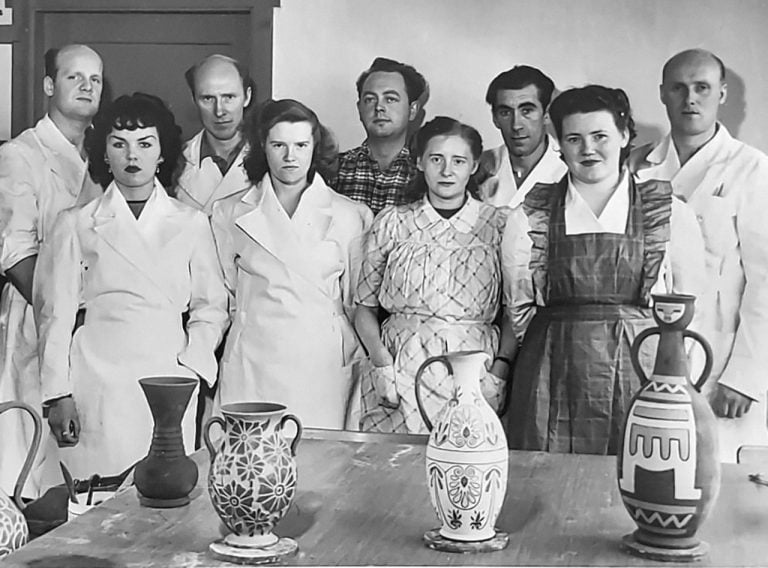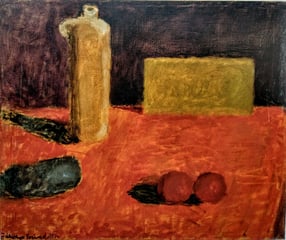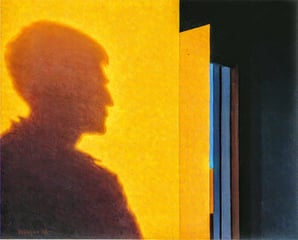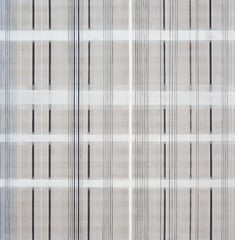DEIGLUMÓR – Ceramics from Icelandic clay 1930 – 1970
13/02/21 – 09/05/21
About the Exhibition
Ceramic art has been with mankind from its earliest times and it is an integral part of the cultural and artistic history of the world. Few relics of ceramic art from ancient Iceland have been preserved. In this context, there exists the word ‘deiglumór’. This ancient word for clay attests to the use of clay to make crucibles in Iceland in early centuries. This history has been forgotten, and yet the use of Icelandic clay was the basis for the fertile ceramic art history of the 20th century. The pioneer Guðmundur Einarsson from Miðdalur founded Listvinahúsið in 1927. From 1946 to 1957 five new ceramic workshops were established in Reykjavik: Leirbrennsla Benedikts Guðmundssonar, Funi, Laugarnesleir, Roði and Glit. Some of these workshops were large, with as many as ten people working on the production process. They all had the use of Icelandic clay in common, up until around 1970. This exhibition includes pieces from the above-mentioned workshops from the time in which Icelandic clay was being used. The aim is to give an insight into the production process of these workshops and to highlight what made each of them unique. In these workshops, both one off pieces and mass-produced ornaments were designed and produced. These included large vases, dinner sets, and souvenirs for tourists. A great deal of artistic ambition was put into unique pieces and the main workshops sought to persuade the public that one off pieces made from clay were on an equal footing with paintings or sculpture. The design and production of Icelandic ceramics marked the start of Icelandic decorative arts in the modern understanding of this term.
Curators. Inga S. Ragnasdóttir and Kristín G. Guðnadóttir
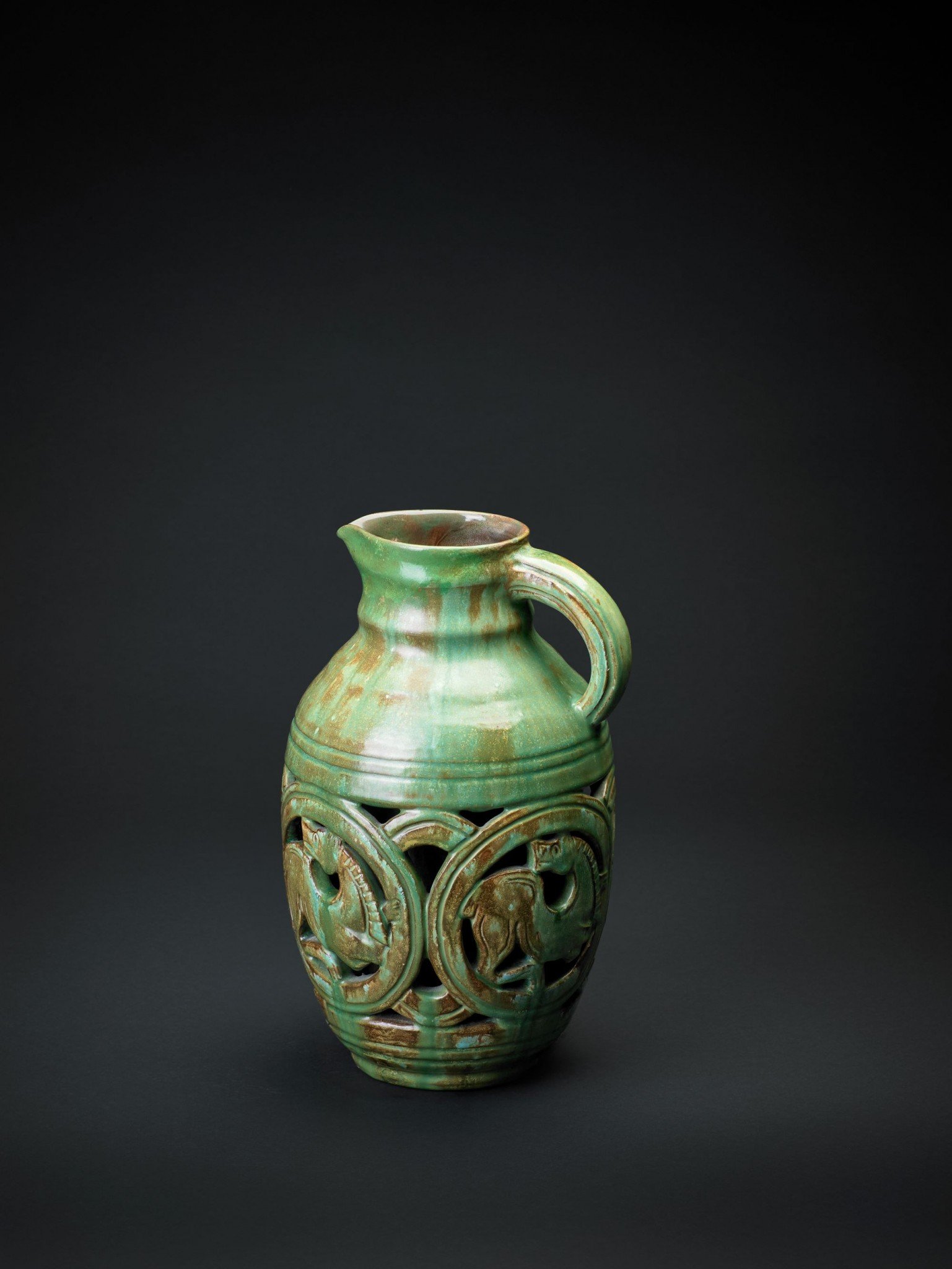
LISTVINAHÚSIÐ established 1927
Listvinahúsið was the first ceramics workshop to be run in Iceland, and with its founding a new page was turned in the history of the decorative arts in Iceland. The founder of Listvinahúsið was Guðmundur Einarsson from Miðdalur – sculptor, painter and more. Guðmundur had studied art in Munich and been introduced to ceramics there. His goal was to use Icelandic clay to produce quality design products for the public.
Listvinahúsið’s first exhibition was held in December 1930. Guðmundur said: ” Each artist should work independently, so that the output becomes diverse”. Objects that had been moulded by Guðmundur were cast and produced: animals, birds and statues. In addition there were wheel-thrown pieces: bowls and vases, which were sometimes constructed from two seperate layers and carved.
Two of the main employees at Listvinahúsið during the first decades were Lydia Zeitner Pálsdóttir, the first trained ceramicist to work in Iceland, and Sveinn Einarsson frá Miðdal, Listvinahúsið’s first apprentice.
Listvinahúsið was the only working ceramics workshop in Iceland until 1946 and it’s output was therefore extremely popular. The workshop is still in operation.

FUNI (1946 – 1980)
Funi was founded by four ceramicists who had learned their trade at Listvinahúsið: Baldur Ásgeirsson, Björgvin Kristófersson, Haukur Kristófersson, and Ragnar Kjartansson, who was responsible for most of the design work. Wheel-thrown and cast objects were produced there, and many of them were both carved and decorated. The pieces had a South American flavour, for example, and it’s also possible to detect the influence of ancient Greek artefacts.
Around 1950, the sgraffito technique was adopted in the decoration process, which involved applying paint directly on to the object and then scratching into it, using a graphic approach. Funi’s first large exhibition was held in 1950, and the critic of Tíminn said that the diversity of the objects and their artistic refinement clearly testified to a new search for line and colour in this art form, marking the beginning of a significant development.
From 1953 the company’s output was characterised by a simplification of form and decorations consisting of modernist imagery. One of Funi’s objectives was to produce well-designed products in large numbers, so that they would be more affordable and thus within the reach of the general public. At the same time, Ragnar Kjartansson invested a great deal of artistic ambition into creating contemporary one off pieces. Ragnar retired in 1957, ushering in a change of emphasis at Funi, as its output became more conventional.

Glit (1957 – 1990)
The ceramicist Ragnar Kjartansson founded Glit in 1957. His goal was to design and produce ambitious objects using Icelandic clay. Firstly, pieces of ceramic art or artefacts; secondly, high-quality design products in small editions; and thirdly, mass-produced, tasteful gift items for the general public. He also developed a lava and ceramic mixture, which has been called lava clay, and was used for wheel-throwing and moulding. Ragnar worked with lava ceramics in a focused way, wherein the roughness of the material and its three-dimensional properties led the way and came into their own. He brought in a large number of artists to collaborate with him, including Dieter Roth, Steinunn Marteinsdóttir and Hringur Jóhannesson. Glit took part in a number of international exhibitions abroad, attracting attention for the quality and contemporary nature of its output. Glit’s work was often simple and stark in form, using matt glazes and soft earth colours. The decoration was either patterning with brushed hues, or variations on classical sgraffito decorations. Glit’s work enjoyed much success, not least abroad. Glit became a large enterprise around 1971 but ceased operations in around 1990.
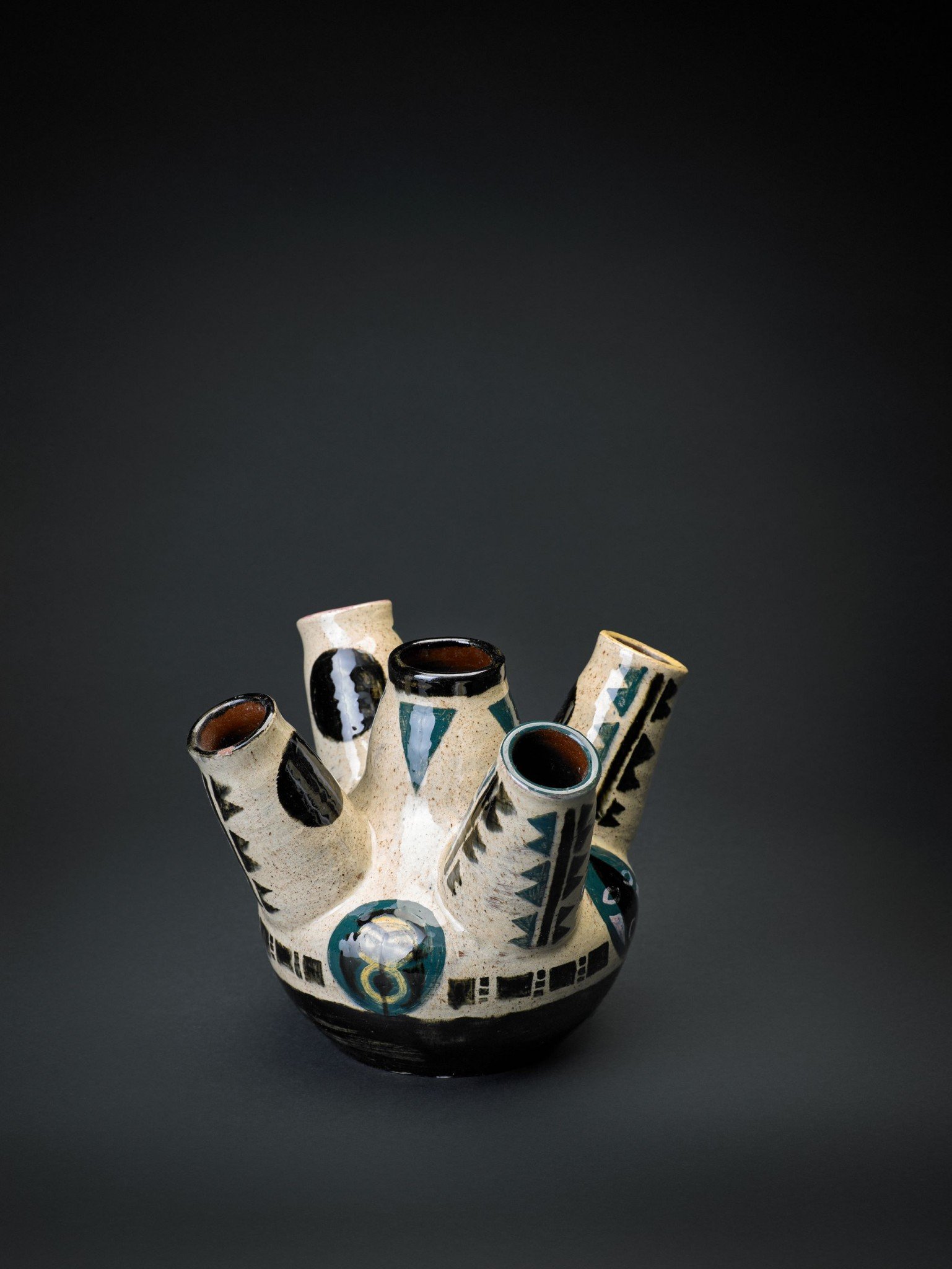
LAUGARNESLEIR (1947-1953)
Gestur Þorgrímsson and Sigrún Guðjónsdóttir studied art in Copenhagen, Gestur focusing on sculpture and Sigrún on painting. They returned home and established Laugarnesleir in 1947, though neither of them had expertise in ceramics. With good backing they were able to establish the business. They were joined by two young foreign artists, Dolinda Tanner and Waistel Cooper. Gestur would wheel-throw the objects; the forms were often complex, with each one being unique. The other three then decorated them in varied ways, with each artist able to shine. However, Picasso was a significant influence on them all. In their manifesto it says, among other things: ‘We intend for these objects to share an equal footing with paintings and sculpture…Therefore, we would be gratified if you would consider these vases, wine vessels, coffee pots with the same attention and appreciation as paintings and sculpture.’ Laugarnesleir ceased operations in 1953, but Gestur and Rúna revived the workshop in 1969, using imported clay.
LEIRBRENNSLA BENEDIKTS GUÐMUNDSSONAR (1946-1953)
Leirbrennsla Benedikts Guðmundssonar
Benedikt Guðmundsson was an artist and trained butcher. He studied ceramics in Denmark and then established a pottery at Sjónarhóll in Reykjavik in 1946. In Denmark he met two ceramic artists – husband and wife Edmund and Norma Andersen – who came to work for him.
The pottery’s output was characterised by its use of the so-called ‘majolica’ method. The clay object was covered with an opaque white glaze, which was often made using a mixture of lead and tin. The glaze was left to dry and then the surface was painted. Finally, the object was fired. This process had not been used in Iceland before. The objects were characterised by their bright appearance and air of lightness, and they were richly decorated. The decorations were varied; animal and plant imagery, but also rhythmical designs with a modernist slant. The objects’ light appearance is reminiscent of porcelain, but, being made of dark Icelandic clay, they have a coarser look. Despite this, they are remarkably elegant. The pottery was in operation until 1952.
LEIRBRENNSLAN ROÐI/S.A.KERAMIK (1950-1987)
Sigurður Arnórsson, (sometimes written as Guðnason) studied ceramics at Listvinahúsið and later founded the ceramic workshop Roði with Helgi Eggertson. To begin with, Sigurður and Helgi were under the influence of Listvinahúsið, as both of them had worked there and acquired good craftsmanship. Sigurður later moved the pottery to Heiðargerði 47, changing the name of the company to S.A. Keramik. He manufactured clay objects of all sizes and forms, such as vases and bowls, as well as casting doves and dogs out of clay. In later years, Sigurður also produced pieces that were partly lava based, painting them in strong colours reminiscent of flaming lava.
Icelandic clay (1930-1970)
Researches into Icelandic clay and attempts to utilize it have been carried out in Iceland since the middle of the 17th century. Guðmundur Einarsson frá Miðdal was the first person to establish clay processing in a substantial way in Iceland, in around 1930, after many years of research and experimentation in collaboration with Jósef Königbauer in Munich. Subsequently, other ceramic workshops followed his example, and from 1930 to 1970 Icelandic clay was used extensively for pottery, with good results. The clay was sourced in clay pits across the country. Two types of clay were used in the clay mixture. On the one hand, ‘deiglumór’ or loess, which was often sourced in Búðardalur or by Elliðaár. And, on the other, plastic geothermal clay, which was most often sourced in Reykjanes or by Laugarvatn. Each pottery worked with its own clay and used its own mixture. It was both difficult and a lot of work to source the clay, clean it and mix it. After 1970, the processing of Icelandic clay had almost completely come to an end and the use of imported stoneware clay took over.

